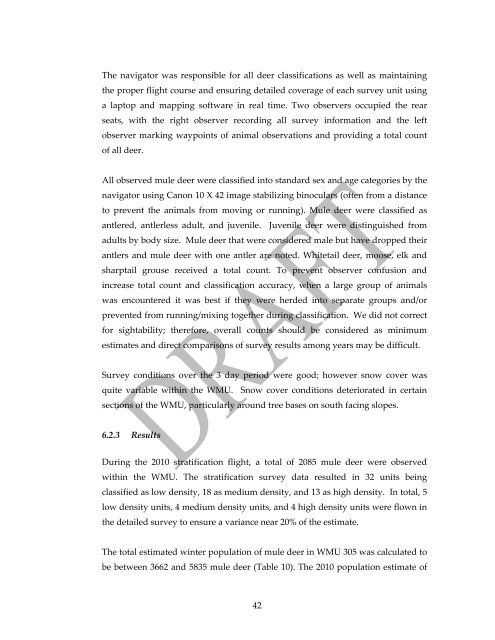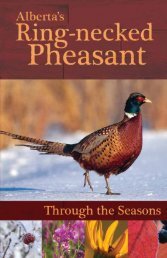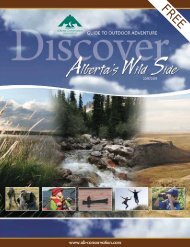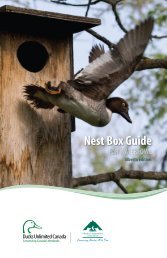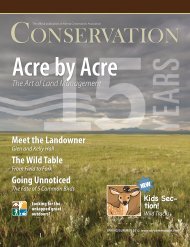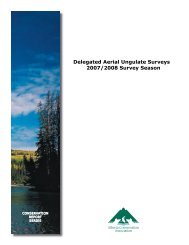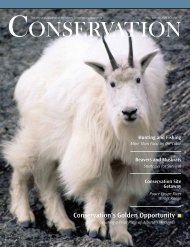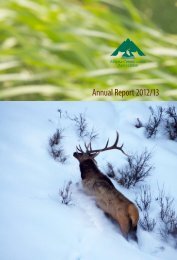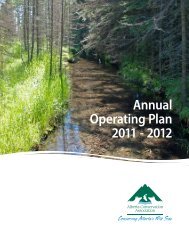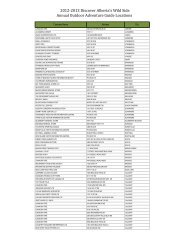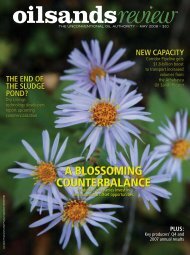Delegated Aerial Ungulate Surveys 2009/2010 Survey Season
Delegated Aerial Ungulate Surveys 2009/2010 Survey Season
Delegated Aerial Ungulate Surveys 2009/2010 Survey Season
You also want an ePaper? Increase the reach of your titles
YUMPU automatically turns print PDFs into web optimized ePapers that Google loves.
The navigator was responsible for all deer classifications as well as maintainingthe proper flight course and ensuring detailed coverage of each survey unit usinga laptop and mapping software in real time. Two observers occupied the rearseats, with the right observer recording all survey information and the leftobserver marking waypoints of animal observations and providing a total countof all deer.All observed mule deer were classified into standard sex and age categories by thenavigator using Canon 10 X 42 image stabilizing binoculars (often from a distanceto prevent the animals from moving or running). Mule deer were classified asantlered, antlerless adult, and juvenile. Juvenile deer were distinguished fromadults by body size. Mule deer that were considered male but have dropped theirantlers and mule deer with one antler are noted. Whitetail deer, moose, elk andsharptail grouse received a total count. To prevent observer confusion andincrease total count and classification accuracy, when a large group of animalswas encountered it was best if they were herded into separate groups and/orprevented from running/mixing together during classification. We did not correctfor sightability; therefore, overall counts should be considered as minimumestimates and direct comparisons of survey results among years may be difficult.<strong>Survey</strong> conditions over the 3 day period were good; however snow cover wasquite variable within the WMU. Snow cover conditions deteriorated in certainsections of the WMU, particularly around tree bases on south facing slopes.6.2.3 ResultsDuring the <strong>2010</strong> stratification flight, a total of 2085 mule deer were observedwithin the WMU. The stratification survey data resulted in 32 units beingclassified as low density, 18 as medium density, and 13 as high density. In total, 5low density units, 4 medium density units, and 4 high density units were flown inthe detailed survey to ensure a variance near 20% of the estimate.The total estimated winter population of mule deer in WMU 305 was calculated tobe between 3662 and 5835 mule deer (Table 10). The <strong>2010</strong> population estimate of42


